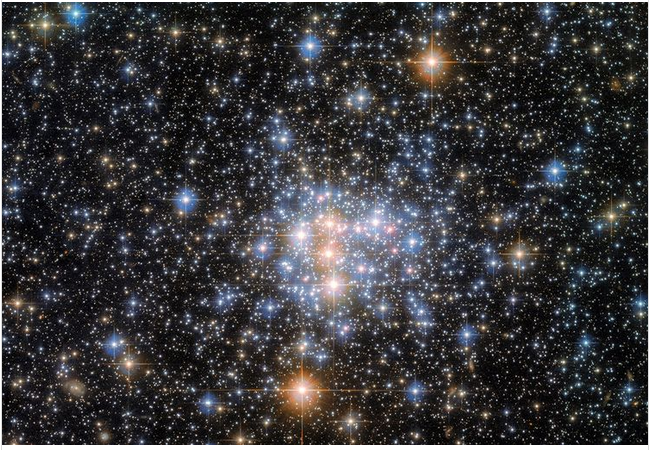The Hubble Telescope captures an image of the Milky Way's bright neighbour

An unprecedented 3D map reveals the true shape of the Milky Way
The Hubble Space Telescope captures a stunning image of a 10-million-year-old cluster of luminous stars
NASA's Hubble Space Telescope recently captured a stunning image of a small portion of the Small Magellanic Cloud (SMC), one of the Milky Way's closest neighbors.
The SMC is a dwarf galaxy close to the Milky Way about 200,000 light-years from Earth and is home to hundreds of millions of stars. Together with the Large Magellanic Cloud, they form a pair visible from some northern latitudes but best seen from the Southern Hemisphere.
NASA shared the image on Instagram, which showed a sea of twinkling stars against a backdrop of prickles of light. The space agency wrote a comment on the post, saying, "The Small Magellanic Cloud contains hundreds of millions of stars, but this image focuses on only a small part of them. These stars consist of the open cluster NGC 376, which has a total mass of about 3400 times the mass of the Sun."

According to the post's commentary, this distinguishes open clusters from globular clusters which generally appear as a continuous haze of starlight in their centers because they are packed with stars. In the case of NGC 376, individual stars are clearly distinguishable even in the most densely populated parts of this image.
Describing the image, the space agency wrote, "The deep blackness of space is disrupted by sprinkles of brightly colored blue, green, and white stars throughout the image. Near the center of the image, a large cluster of similarly colored stars. They shine brightly."
The Small Magellanic Cloud (SMC), also known as Nubecula Minor, is one of the Milky Way's closest neighbors and one of the most distant objects visible to the naked eye.
Source: websites

